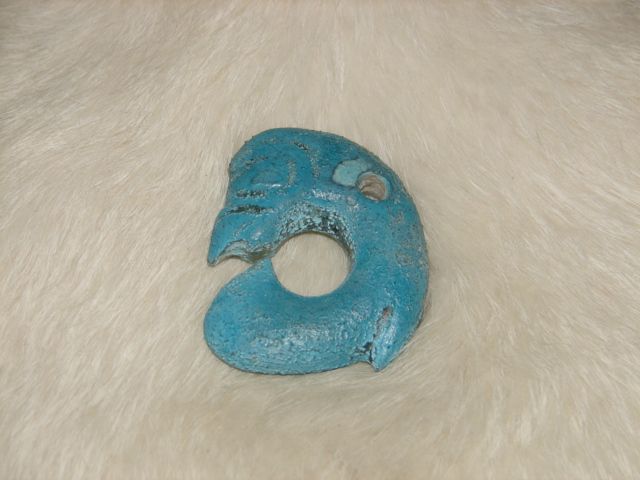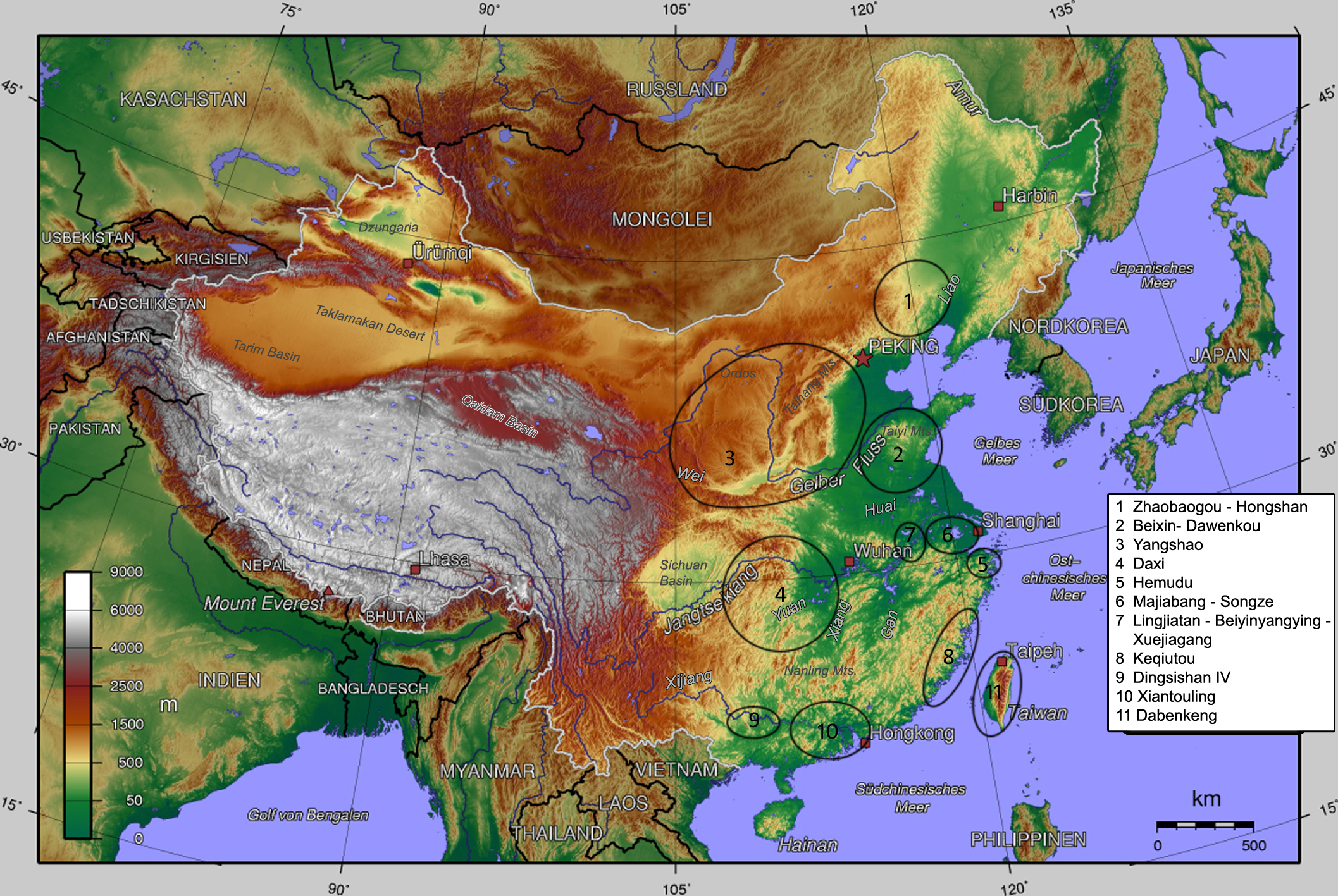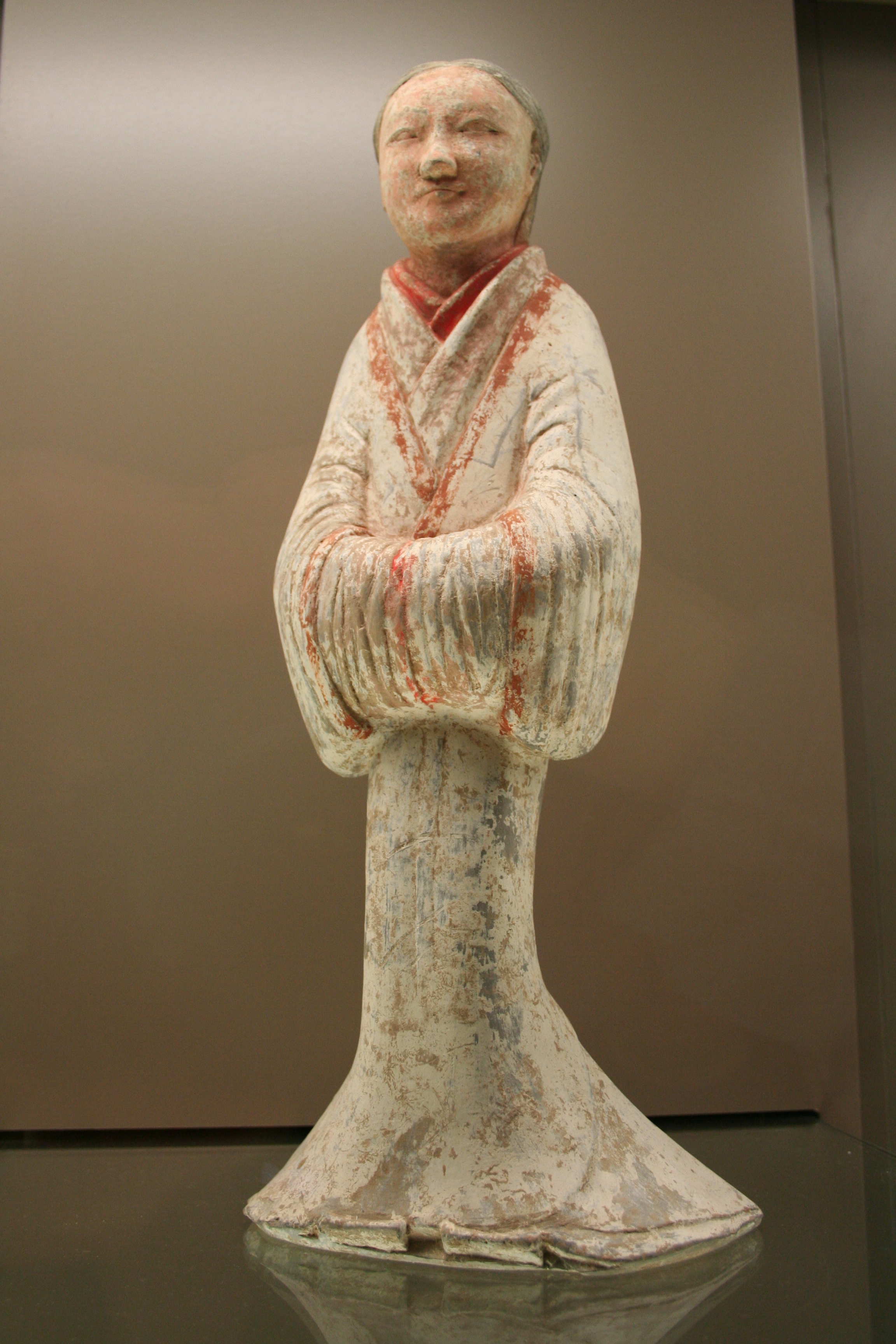|
Pig Dragon
A pig dragon or ''zhūlóng'' () is a type of jade artifact from the Hongshan culture of neolithic China. Pig dragons are zoomorphic forms with a pig-like head and elongated limbless body coiled around to the head and described as "suggestively fetal". Early pig dragons are thick and stubby, and later examples have more graceful, snakelike bodies. Pig dragons were produced by the Hongshan culture. Along with the same culture's jade eagles (),Ko, Patrick. ''Federation of Medical Studies of Hong Kong'',The History of Ancient Chinese Jade Culture. Jan 2008. they often featured as grave goods. Pig bones have been found interred alongside humans at Hongshan burial sites, suggesting that the animal had some ritual significance. There is some speculation that the pig dragon is the first representation of the Chinese dragon. The character for "dragon" in the earliest Chinese writing has a similar coiled form, as do later jade dragon amulets from the Shang period.Salviati, Filippo (20 ... [...More Info...] [...Related Items...] OR: [Wikipedia] [Google] [Baidu] |
Chinese Jade
Chinese jade refers to the jade mined or carved in China from the Neolithic onward. It is the primary hardstone of Chinese sculpture. Although deep and bright green jadeite is better known in Europe, for most of China's history, jade has come in a variety of colors and white "mutton-fat" nephrite was the most highly praised and prized. Native sources in Henan and along the Yangtze were exploited since prehistoric times and have largely been exhausted; most Chinese jade today is extracted from the northwestern province of Xinjiang. Jade was prized for its hardness, durability, magical qualities, and beauty. In particular, its subtle, translucent colors and protective qualitiesFiero, Gloria K. ''The Humanistic Tradition'' 6th Ed, Vol. I. McGraw-Hill, 2010. caused it to become associated with Chinese conceptions of the soul and immortality. With gold, it was considered to be a symbol of heaven. The most prominent early use was the crafting of the Six Ritual Jades, found since t ... [...More Info...] [...Related Items...] OR: [Wikipedia] [Google] [Baidu] |
Hongshan Culture
The Hongshan culture () was a Neolithic culture in the West Liao river basin in northeast China. Hongshan sites have been found in an area stretching from Inner Mongolia to Liaoning, and dated from about 4700 to 2900 BC. The culture is named after (), a site in Hongshan District, Chifeng. The site was discovered by the Japanese archaeologist Torii Ryūzō in 1908 and extensively excavated in 1935 by Kōsaku Hamada and Mizuno Seiichi. Historical context In northeast China, Hongshan culture was preceded by Xinglongwa culture (6200–5400 BC), Xinle culture (5300–4800 BC), and Zhaobaogou culture, which may be contemporary with Xinle and a little later. The Yangshao culture of the Yellow River existed contemporaneously with the Hongshan culture (see map). These two cultures interacted with each other. Hongshan culture was succeeded by the Lower Xiajiadian culture (2200–1600 BC), which was replaced by a different Upper Xiajiadian culture (1000-600 BC) with a shift from ... [...More Info...] [...Related Items...] OR: [Wikipedia] [Google] [Baidu] |
Neolithic China
This is a list of Neolithic cultures of China that have been unearthed by archaeologists. They are sorted in chronological order from earliest to latest and are followed by a schematic visualization of these cultures. It would seem that the definition of Neolithic in China is undergoing changes. The discovery in 2012 of pottery about 20,000 years BC indicates that this measure alone can no longer be used to define the period. It will fall to the more difficult task of determining when cereal domestication started. List Schematic outline These cultures are existed for the period from 8500 to 1500 BC. Neolithic cultures remain unmarked and Bronze Age cultures (from 2000 BC) are marked with *. There are many differences in opinion by dating these cultures, so the dates chosen here are tentative: For this schematic outline of its neolithic cultures China has been divided into the following nine parts: #Northeast China: Inner Mongolia, Heilongjiang, Jilin and Liaoning. #Northw ... [...More Info...] [...Related Items...] OR: [Wikipedia] [Google] [Baidu] |
Chinese Grave Goods
Mingqi (Chinese: or , p ''míngqì''), sometimes referred to as "spirit objects" or "vessels for ghosts", are Chinese burial goods. They included daily utensils, musical instruments, weapons, armor, and intimate objects such as the deceased's cap, can and bamboo mat. Mingqi also could include figurines, spiritual representations rather than real people, of soldiers, servants, musicians, polo riders, houses, unicorns and horses. Extensive use of mingqi during certain periods may either have been an attempt to preserve the image of ritual propriety by cutting costs, or it may have a new idea separating the realm of the dead from that of the living. Purpose Mingqi served to provide the deceased with necessities and comforts in the afterlife. The deceased person's '' po'' was said to remain in the realm of the tomb while the ''hun'' ascended to heaven. To appease and make worthwhile the deceased's ''po'', mingqi claimed relevant and liked by the deceased were placed in h ... [...More Info...] [...Related Items...] OR: [Wikipedia] [Google] [Baidu] |
Chinese Dragon
The Chinese dragon, also known as ''loong'', ''long'' or ''lung'', is a legendary creature in Chinese mythology, Chinese folklore, and Chinese culture at large. Chinese dragons have many Outline of life forms, animal-like forms such as Bixi (mythology), turtles and Chiwen, fish, but are most commonly depicted as snake-like with four legs. Academicians have identified four reliable theories on the origin of the Chinese dragon: snakes, Chinese alligators, thunder and nature worship. They traditionally symbolize potent and wikt:auspicious, auspicious powers, particularly control over water, rainfall, typhoons, and floods. The dragon is also a symbol of power, strength, and good luck for people who are worthy of it in East Asian cultural sphere, East Asian culture. During the days of Imperial China, the Emperor of China usually used the dragon as a symbol of his imperial strength and power. In Chinese culture, excellent and outstanding people are compared to a dragon, while incapable ... [...More Info...] [...Related Items...] OR: [Wikipedia] [Google] [Baidu] |
Chinese Character
Chinese characters () are logograms developed for the writing of Chinese. In addition, they have been adapted to write other East Asian languages, and remain a key component of the Japanese writing system where they are known as '' kanji''. Chinese characters in South Korea, which are known as '' hanja'', retain significant use in Korean academia to study its documents, history, literature and records. Vietnam once used the ''chữ Hán'' and developed chữ Nôm to write Vietnamese before turning to a romanized alphabet. Chinese characters are the oldest continuously used system of writing in the world. By virtue of their widespread current use throughout East Asia and Southeast Asia, as well as their profound historic use throughout the Sinosphere, Chinese characters are among the most widely adopted writing systems in the world by number of users. The total number of Chinese characters ever to appear in a dictionary is in the tens of thousands, though most are g ... [...More Info...] [...Related Items...] OR: [Wikipedia] [Google] [Baidu] |
Shang Dynasty
The Shang dynasty (), also known as the Yin dynasty (), was a Dynasties in Chinese history, Chinese royal dynasty founded by Tang of Shang (Cheng Tang) that ruled in the Yellow River valley in the second millennium BC, traditionally succeeding the Xia dynasty and followed by the Western Zhou, Western Zhou dynasty. The classic account of the Shang comes from texts such as the ''Book of Documents'', ''Bamboo Annals'' and ''Records of the Grand Historian''. According to the traditional chronology based on calculations made approximately 2,000 years ago by Liu Xin (scholar), Liu Xin, the Shang ruled from 1766 to 1122 BC, but according to the chronology based upon the "current text" of ''Bamboo Annals'', they ruled from 1556 to 1046 BC. Comparing the same text with dates of five-planet conjunction (astronomy), conjunctions, David Pankenier, supported by David Nivison, proposed dates of the establishment of the dynasty to 1554 BC. The Xia–Shang–Zhou Chronology Pro ... [...More Info...] [...Related Items...] OR: [Wikipedia] [Google] [Baidu] |
Bi (jade)
The ''bi'' is a type of circular ancient Chinese jade artifact. The earliest ''bi'' were produced in the Neolithic period, particularly by the Liangzhu culture ( 3400–2250 BCE).Teaching Chinese Archaeology, object 3 - NGA Later examples date mainly from the , Zhou and Han dynasties. They were also made in |
Magatama
are curved, comma-shaped beads that appeared in prehistoric Japan from the Final Jōmon period through the Kofun period, approximately 1000 BCE to the 6th century CE. The beads, also described as "jewels", were made of primitive stone and earthen materials in the early period, but by the end of the Kofun period were made almost exclusively of jade. originally served as decorative jewelry, but by the end of the Kofun period functioned as ceremonial and religious objects. Archaeological evidence suggests that were produced in specific areas of Japan and were widely dispersed throughout the Japanese archipelago to the Southern Koreanic kingdoms via trade routes. Jōmon period first appeared in Japan in the Final Jōmon period (1000–300 BCE), and in this period were made from relatively simple, naturally occurring materials, including clay, talc, slate, quartz, gneiss, jadeite, nephrite, and serpentinite. from the Jōmon period were irregularly shaped, lacked continu ... [...More Info...] [...Related Items...] OR: [Wikipedia] [Google] [Baidu] |
Lingling-o
''Lingling-o'' or ''ling-ling-o'', is a type of penannular or double-headed pendant or amulet that has been associated with various late Neolithic to late Iron Age Austronesian cultures. Most ''lingling-o'' were made in jade workshops in the Philippines, and to a lesser extent in the Sa Huỳnh culture of Vietnam, although the raw jade was mostly sourced from Taiwan. The earliest surviving examples of lingling-o, dating back to around 500 BC, were made out of nephrite jade, but many later examples were made of shell, gold, copper, and wood; the kind of material suggests differences in the social standing of its wearer. The term was first popularized by H. Otley Beyer, who adapted it from the Southern Ifugao name for such ornaments. The term has since also come to be used as a blanket term for various metal age Austronesian ornaments found in the Philippines, Taiwan, and Vietnam. Although the earliest known lingling-o dates from 500 BC, the art of jade carving and its trade in ... [...More Info...] [...Related Items...] OR: [Wikipedia] [Google] [Baidu] |
Gogok
''Gobeunok'' or ''Gogok'' are comma-shaped or curved beads and jewels that appeared from middle age of Mumun Period (1500 to 300 BC) through the Three Kingdoms of Korea (57 BC to 668 AD). The ''Gogok'' (곡옥; 曲玉) is posited by researchers to have been a symbol of prestige among Mumun culture community leaders as the tombs of presumably powerful figures were oftentimes accompanied by bronze daggers, stone daggers, and comma-shaped jewels. The Gogok's role as a symbol of prestige would carry onto the Three Kingdoms Period of Korea (as Gogok would remain a salient feature of Korean royal paraphernalia (Silla and Baekje). They range in size range from , and are oftentimes fashioned with a hole to be attached or threaded to another object. The origin of these comma-shaped jewels are posited by some to originate from the dragon-shaped jadeite ornament of the Hongshan culture (4,500 to 3,000 BC) of the Liao River Basin. However due to the spatial and temporal distance, most research ... [...More Info...] [...Related Items...] OR: [Wikipedia] [Google] [Baidu] |








